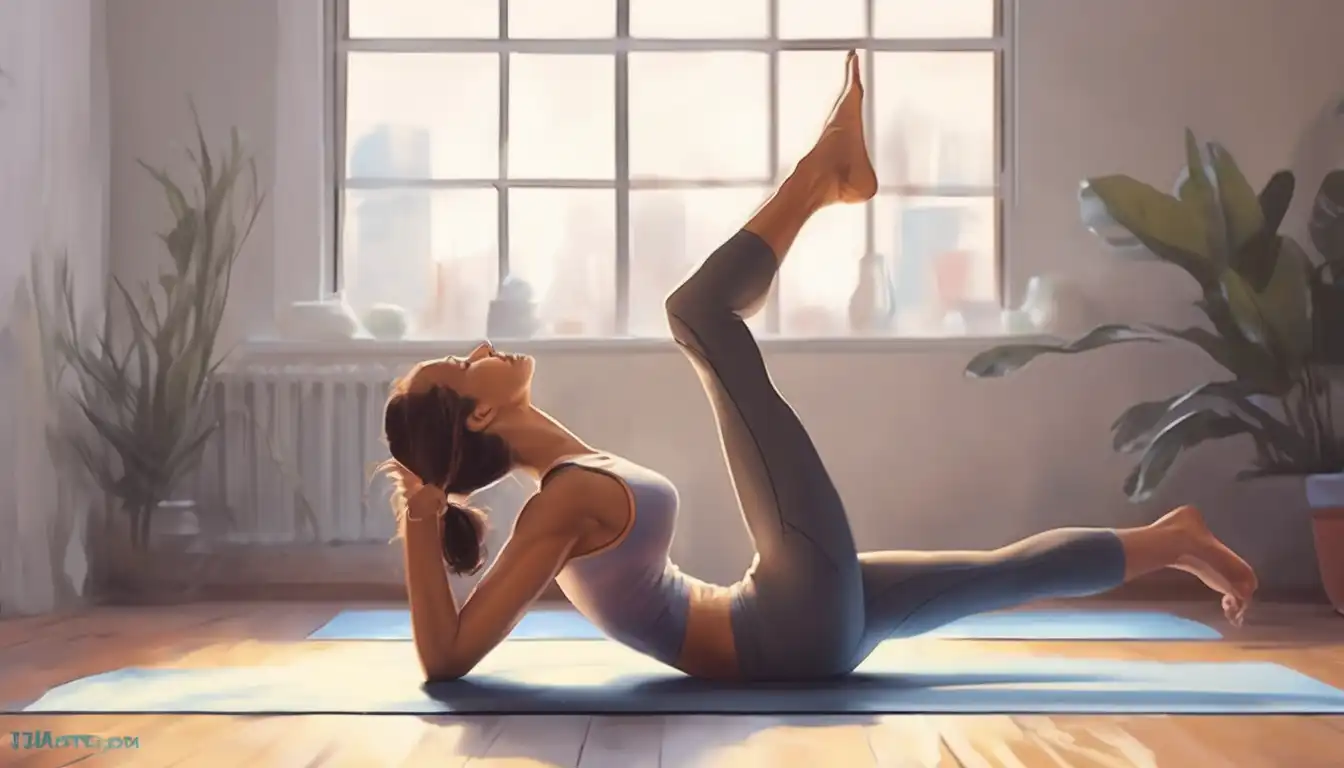Unlock Your Body's Potential: Essential Stretches for Flexibility and Relaxation
In today's fast-paced world, maintaining flexibility and finding moments of relaxation are crucial for overall well-being. Whether you're an athlete, office worker, or someone simply looking to improve mobility, incorporating regular stretching into your routine can transform your physical and mental health. This comprehensive guide explores the most effective stretches designed to enhance flexibility while promoting deep relaxation.
Why Flexibility and Relaxation Matter
Flexibility isn't just for gymnasts and dancers—it's a fundamental component of functional movement that affects everyone. Improved flexibility enhances joint range of motion, reduces injury risk, and alleviates muscle tension. When combined with relaxation techniques, stretching becomes a powerful tool for stress reduction and mental clarity. Regular practice can help combat the negative effects of sedentary lifestyles and high-stress environments.
Full Body Stretching Routine
Neck and Shoulder Release
Begin with gentle neck tilts to release tension in the upper body. Slowly tilt your head toward each shoulder, holding for 15-20 seconds. Follow with shoulder rolls, moving them in circular motions to loosen tight muscles. This sequence is particularly beneficial for those who spend long hours at desks or looking at screens.
Standing Forward Fold
This classic yoga pose stretches the entire back body while calming the nervous system. Stand with feet hip-width apart, exhale as you fold forward, and let your head hang heavy. Hold for 30 seconds, breathing deeply to enhance the relaxation response. The standing forward fold also improves hamstring flexibility, which is essential for proper posture and walking mechanics.
Child's Pose for Deep Relaxation
Kneel on the floor, sit back on your heels, and fold forward until your forehead rests on the ground. Extend your arms forward or rest them alongside your body. This restorative pose gently stretches the hips, thighs, and ankles while promoting a sense of security and calm. Hold for 1-2 minutes, focusing on slow, rhythmic breathing.
Targeted Flexibility Exercises
Hamstring Stretch Series
Tight hamstrings contribute to lower back pain and limited mobility. Try the seated hamstring stretch: sit with legs extended, hinge forward from the hips until you feel a gentle pull. For deeper flexibility, incorporate the reclining hand-to-big-toe pose using a strap or towel. These stretches improve flexibility in the posterior chain, which is vital for activities like running and bending.
Hip Flexor and Quadriceps Stretch
Modern lifestyles often lead to tight hip flexors from prolonged sitting. The kneeling hip flexor stretch targets this area effectively: kneel on one knee, push hips forward until you feel a stretch in the front thigh. Combine with a standing quad stretch by pulling your heel toward your glutes. These exercises enhance hip mobility and counteract the effects of sedentary behavior.
Chest and Shoulder Opener
Improve upper body flexibility with the doorway stretch: stand in a doorway, place forearms on the frame, and gently step forward. This counteracts the rounded shoulder posture common in desk workers. For comprehensive shoulder mobility, incorporate arm circles and cross-body shoulder stretches into your routine.
Advanced Flexibility Techniques
Yin Yoga for Deep Tissue Release
Yin yoga involves holding passive stretches for 3-5 minutes to target connective tissues. Poses like dragon pose and saddle pose gradually increase flexibility while inducing meditative states. This practice is excellent for those seeking both physical flexibility and mental relaxation.
PNF Stretching for Rapid Improvement
Proprioceptive Neuromuscular Facilitation (PNF) combines stretching and contracting muscles to achieve faster flexibility gains. The contract-relax method involves pushing against resistance for 5-10 seconds before relaxing deeper into the stretch. This technique is particularly effective for athletes and those with specific flexibility goals.
Creating Your Stretching Routine
Consistency is key to improving flexibility. Aim for 10-15 minutes of stretching daily, or 20-30 minutes 3-4 times weekly. Always warm up with light movement before stretching, and never force your body beyond comfortable limits. Listen to your body's signals and adjust intensity accordingly. For optimal results, combine stretching with other wellness practices like proper hydration and balanced nutrition.
Breathing Techniques for Enhanced Relaxation
Proper breathing transforms stretching from mere physical exercise to a holistic relaxation practice. Implement diaphragmatic breathing by inhaling deeply through your nose, allowing your abdomen to expand, then exhaling slowly through your mouth. Syncing breath with movement enhances the mind-body connection and maximizes the relaxation benefits of each stretch.
Safety Considerations and Modifications
While stretching offers numerous benefits, proper technique is essential to prevent injury. Avoid bouncing movements, which can cause muscle strain. If you have existing injuries or medical conditions, consult a healthcare professional before beginning new stretching routines. Use props like blocks, straps, or pillows to modify poses and ensure comfortable, effective stretching.
Integrating Stretching into Daily Life
Incorporate micro-stretching breaks throughout your day—after waking up, during work breaks, or before bedtime. Create a dedicated stretching space in your home with a comfortable mat and peaceful atmosphere. Consider joining stretching classes or using guided videos to maintain motivation and ensure proper form. Remember that flexibility progress is gradual; celebrate small improvements and maintain patience with your journey.
By committing to regular stretching practice, you'll not only enhance your physical flexibility but also cultivate greater mental relaxation and body awareness. The stretches outlined in this guide provide a solid foundation for developing a personalized routine that addresses your specific needs and goals. Start slowly, stay consistent, and experience the transformative power of flexibility and relaxation in your daily life.
